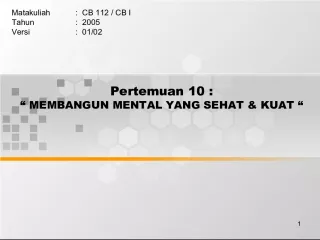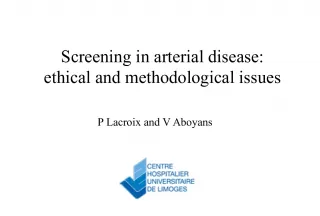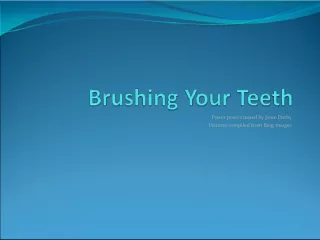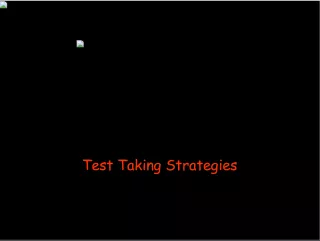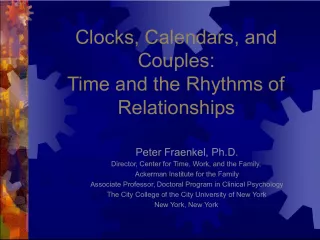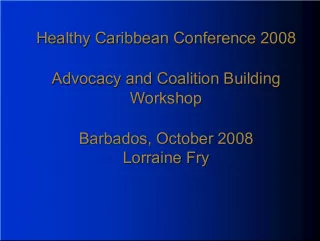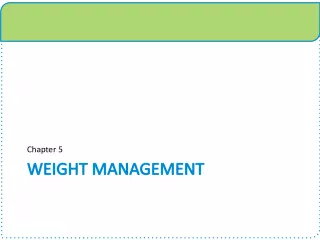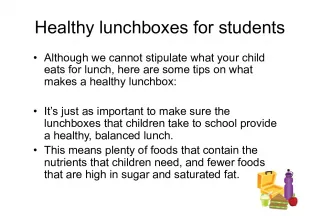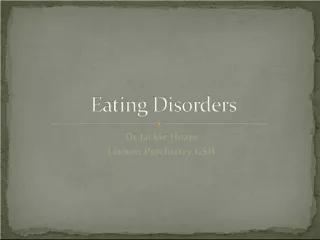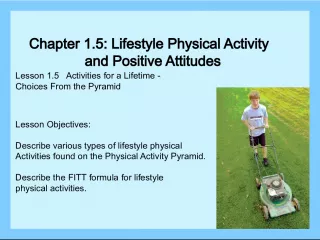The Importance of Healthy Eating
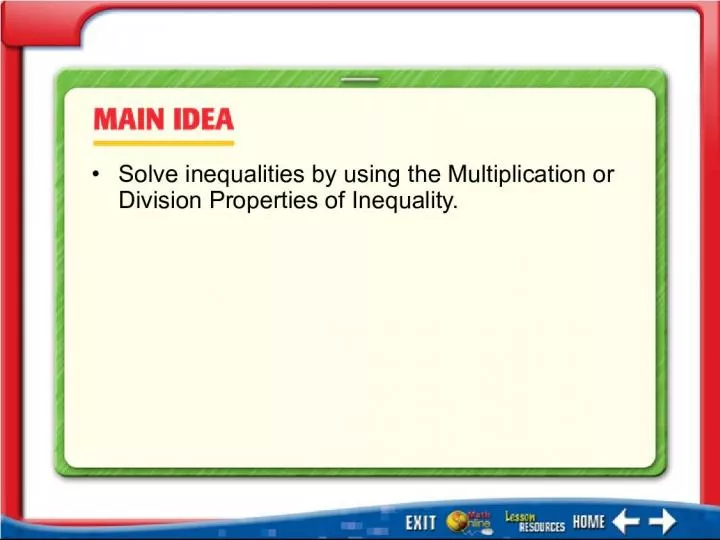

Healthy eating is essential for maintaining good health and reducing the risk of chronic diseases. It involves consuming a balanced diet that includes a variety of fruits, vegetables, whole grains, lean proteins, and healthy fats
- Uploaded on | 6 Views
-
 polyan
polyan
About The Importance of Healthy Eating
PowerPoint presentation about 'The Importance of Healthy Eating'. This presentation describes the topic on Healthy eating is essential for maintaining good health and reducing the risk of chronic diseases. It involves consuming a balanced diet that includes a variety of fruits, vegetables, whole grains, lean proteins, and healthy fats. The key topics included in this slideshow are . Download this presentation absolutely free.
Presentation Transcript
Slide1Main Idea/Vocabulary• Solve inequalities by using the Multiplication or Division Properties of Inequality.
Slide2KC 1These properties are also true for a ≥ b and a ≤ b .
Slide3Example 1Solve Inequalities by Dividing Solve 6 x < –30. Check your solution. Answer: The solution is x < –5. You can check this solution by substituting numbers less than –5 into the inequality. Write the inequality. Simplify. Divide each side by 6. 6 6
Slide41.A 2. B 3. C 4. D Example 1 A. x < –6 B. x < 6 C. x > –6 D. x > 6 Solve 4 x < –24.
Slide5Example 2Solve Inequalities by Multiplying Write the inequality. Answer: The solution is p ≥ 18. You can check this solution by substituting 18 and a number greater than 18 into the inequality. Multiply each side by 2. Simplify.
Slide61.A 2. B 3. C 4. D Example 2 A. p < 10 B. p > –10 C. p > 10 D. p > 7 > 5.
Slide7KC 2These properties are also true for a ≥ b and a ≤ b .
Slide8Example 3Multiply or Divide by a Negative Number Answer: The solution is b ≥ –20. You can check this solution by replacing b in the original inequality with –20 and a number greater than –20. Write the inequality. Simplify. Multiply each side by –4 and reverse the inequality symbol.
Slide91.A 2. B 3. C 4. D Example 3 A. x ≥ 21 B. x ≥ –21 C. x ≤ 21 D. x ≤ –21
Slide10Example 4Solve –4 n > –60. Check your solution. Answer: The solution is n < 15. Multiply or Divide by a Negative Number Write the inequality. Check this result. Divide each side by –4 and reverse the inequality symbol. 4 4
Slide111.A 2. B 3. C 4. D Example 4 A. b > 7 B. b > –7 C. b < 7 D. b < –7 Solve –8 b < –56.
Slide12Example 5PACKAGES A box weighs 1 pound. It is filled with books that weigh 2 pounds each. Jesse can carry at most 20 pounds. Assuming space is not an issue, write and solve an inequality to find how many books he can put in the box and still carry it. The phrase at most means less than or equal to . Let p = the number of books he puts in the box. Then write an inequality. 1 pound plus 2 pounds per book is less than or equal to 20 pounds. 1 2p 20
Slide13Example 5Answer: Since he can not put half a book in the box, Jesse can put at most 9 books in the box. Write the inequality. Simplify. 1 – 1 + 2p ≤ 20 – 1 Subtract 1 from each side. Divide each side by 2. Simplify. 2 2
Slide141.A 2. B 3. C 4. D Example 5 A. 18 toys B. 24 toys C. 28 toys D. 30 toys PACKAGES A box weighs 2 pounds. It is filled with toys that weigh 1 pound each. Danielle can carry at most 30 pounds. Assuming space is not an issue, how many toys can she can put in the box and still carry it?
Slide151.A 2. B 3. C 4. D Five Minute Check 1 A. y < 5 B. y < –5 C. y < 11 D. y > –11 Solve y – 8 < –3. Check your solution. (over Lesson 8-7)
Slide161.A 2. B 3. C 4. D Five Minute Check 2 A. g ≥ 1 B. g ≤ –13 C. g ≥ –13 D. g ≤ 1 Solve –6 ≤ 7 + g . Check your solution. (over Lesson 8-7)
Slide171.A 2. B 3. C 4. D Five Minute Check 3 A. k ≥ 12 B. k ≥ –12 C. k ≤ –6 D. k ≥ –6 Solve k + 9 ≥ 3. Check your solution. (over Lesson 8-7)
Slide181.A 2. B 3. C 4. D Five Minute Check 4 A. n – 7 > 16; n > 23 B. n + 7 ≤ 16; n ≤ 9 C. n + 7 ≥ 16; n ≥ 9 D. n + 16 ≥ 7 ; n ≥ –9 Write an inequality and solve the problem. Seven more than a number is at least 16. (over Lesson 8-7)
Slide191.A 2. B 3. C 4. D Five Minute Check 5 A. n – 5 > –11; n > –6 B. n – 5 < –11; n < –6 C. n + (–11) > 5; n > 16 D. n + 5 ≤ –11 ; n ≤ –16 Write an inequality and solve the problem. The difference between a number and 5 is less than –11. (over Lesson 8-7)
Slide201.A 2. B 3. C 4. D Five Minute Check 6 A. 12 ≥ 5 + d B. 12 > 5 + d C. 12 < 5 + d D. 12 ≤ 5 + d Marcus jogs at least 5 more miles per week than his dad. Marcus jogs 12 miles per week. Which inequality can be used to determine how many miles Marcus’ dad jogs per week? (over Lesson 8-7)
Slide21End of Custom Shows

